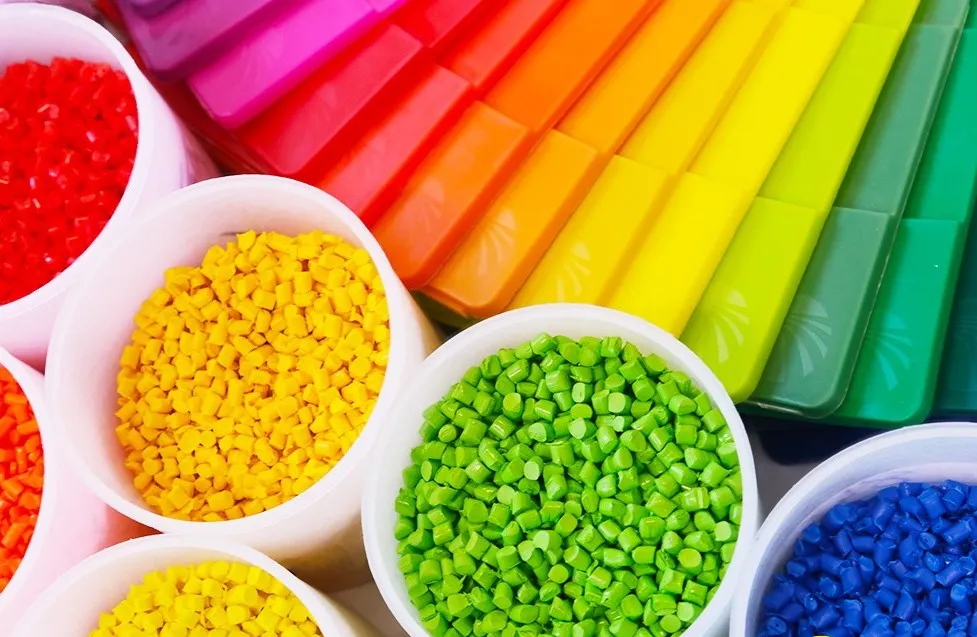Additive Masterbatches, as one of the key products in the polymer industry, have found a special place among manufacturers due to their numerous advantages. These additives, which are supplied in granular form, make storage, handling, and usage easier for producers.
In the complex and diverse world of plastic production, additive masterbatches help improve the properties of final products by providing their unique features. These products have become an important tool in manufacturing processes, especially because of their ease of processing and application. Their outstanding capabilities include enhancing final quality, improving material performance, and increasing durability.
Given the growing demand of industries for high-quality products with optimal performance, additive masterbatches have become an essential component in the raw material supply chain. This article will examine the features, benefits, and broad applications of additive masterbatches and help you gain a better understanding of the role these products play in the industry.
What is Masterbatch?
Masterbatch is a material in which pigments and various additives are optimally incorporated into a base resin. This product mainly contains large amounts of color powder (pigments), mineral fillers, or other chemicals used to achieve three main objectives: coloring, improving material properties, and reducing the final production cost.
The polymer base of the masterbatch generally should be similar to the main plastic used in the manufacturing process. The physical form of masterbatch is granular, which facilitates its storage, handling, and application. These features make masterbatch one of the popular choices in various industries, as it allows manufacturers to add raw materials with desired quality and properties to the production process.
Components of Additive Masterbatch
Masterbatches consist of three main components, each playing an important role in the performance and final quality of the product:

-
Base Polymer
The base polymer is the main material into which additives and pigments are incorporated. Common types of base polymers include:-
Polyethylene (PE): Used for producing various products, including films and bottles.
-
Polypropylene (PP): Used in manufacturing automotive parts and household appliances.
-
Polystyrene (PS): Applied in producing containers and packaging.
-
Ethylene Vinyl Acetate (EVA): Used to improve flexibility and clarity.
-
Low molecular weight waxes: Used as processing aids in polymers.
-
Alkyd Polymer: To improve mechanical and chemical properties.
-
Other special polymers: Depending on the specific needs of each industry.
Additives
Additives are added to masterbatches to modify and improve polymer properties. These additives include:-
Property-enhancing additives: Such as stabilizers, antioxidants, and UV protectants.
-
Pigments: For coloring polymers and producing various colors.
-
Fillers: Mineral materials that help improve mechanical properties and reduce costs.
The amount of additives in masterbatches varies depending on their type, potency, and the polymer base.
Compatibilizer
Compatibilizers, known as amphiphilic compounds, have two ends with different chemical properties and serve to:-
Increase thermal stability: By helping maintain polymer properties at high temperatures.
-
Compatibilize polyolefins and engineering polymers: By improving dissolution and mixing of additives within the polymer matrix.
-
Form a stable layer on the surface of additives and pigments: Through mutual interactions and bonding with the polymer matrix.
The presence of compatibilizers ensures uniform dispersion of pigments in the polymer and maintains the color quality of the product, while also supporting polymer stability without negatively affecting its quality.
Masterbatch Production Process
The production of masterbatches involves several key stages, which require precision and optimization to achieve desired quality and properties. The general masterbatch manufacturing process includes:
-
Raw Material Selection
-
Polymer base: Selecting the appropriate base polymer based on final product requirements, such as polyethylene, polypropylene, polystyrene, etc.
-
Additives: Choosing pigments, fillers, and chemicals based on needed properties like color, property enhancement, and cost reduction.
-
Compatibilizer: Selecting compatibilizers to improve mixing and dispersion of additives in the polymer base.
-
-
Material Preparation
-
Grinding and milling: Some raw materials, like pigments and fillers, may require grinding or milling to reach desired particle sizes.
-
Initial mixing: Raw materials are precisely measured and mixed to prepare a uniform blend.
-
-
Mixing Process
-
Melting and mixing: Raw materials (polymer base and additives) are fed into thermal mixing equipment such as extruders or high-shear mixers. In this step, materials melt at high temperature and mix uniformly.
-
Uniform dispersion: Additives are evenly dispersed within the polymer base. This step is critical for achieving the quality and uniformity of the masterbatch.
-
-
Granulation Process
-
Cooling and cutting: After mixing, the molten blend is passed through cutters or cooled on belts to solidify and form granules.
-
Powdering and size reduction: In some cases, masterbatches may be produced as powders or smaller granules for easier handling and final use.
-
-
Quality Control
-
Physical and chemical testing: Masterbatch samples are tested for properties such as color, thermal stability, mechanical properties, and uniformity.
-
Final adjustments: Based on test results, final tweaks may be made to meet the desired properties.
-
-
Packaging and Storage
-
Packaging: Produced masterbatches are packed in suitable containers to protect from damage and contamination.
-
Storage: Packaged products are moved to warehouses and prepared for distribution and final use.
-
This production process is carefully designed to deliver high-quality masterbatches with desired characteristics to the market.
Advantages of Masterbatch
Masterbatches are highly popular across various industries due to their unique features and effective performance. Some key advantages of masterbatches include:
-

-
Ease of Use and Storage
-
Granular form: Masterbatches are supplied as granules, which makes them easy to store, handle, and use.
-
Accurate dosage: Using masterbatch allows for more precise and optimized consumption of additives and pigments.
High Quality and Uniformity
-
Uniform dispersion: Masterbatches, having a polymer base similar to the main polymer, help achieve uniform distribution of pigments and additives within the polymer matrix.
-
Precise property control: Masterbatches enable accurate control over color, mechanical, and chemical properties.
Cost Reduction
-
Reduced raw material needs: Using masterbatch decreases the consumption of expensive pigments and additives.
-
Improved production costs: Masterbatches help manufacturers reduce production costs by optimizing material usage.
Increased Stability and Product Life
-
Thermal and chemical stability: Many masterbatches contribute to enhancing the thermal and chemical stability of products.
-
Protection of final product: Specific additives can protect the product against environmental factors such as UV exposure, oxidation, and heat.
Versatile Applications
-
Wide range of uses: Masterbatches are produced for various applications in industries like packaging, automotive, household appliances, and medical fields.
-
Customizability: They can be specially formulated to meet the specific requirements of each industry, providing desired properties.
Improved Production Efficiency
-
Reduced production issues: Masterbatches can minimize problems such as pigment sedimentation and color instability.
-
Enhanced mixing process: Their granular form facilitates better mixing and blending with other materials, improving the production process.
Using masterbatches enables manufacturers to economically and efficiently produce high-quality products with desired properties.
-


